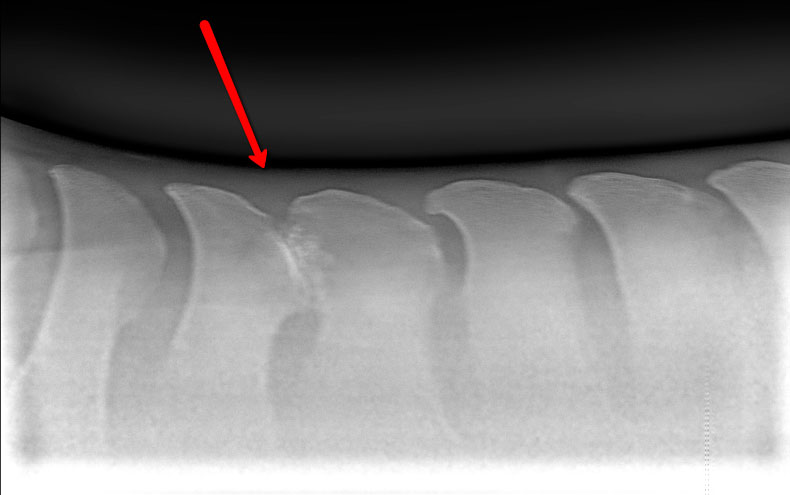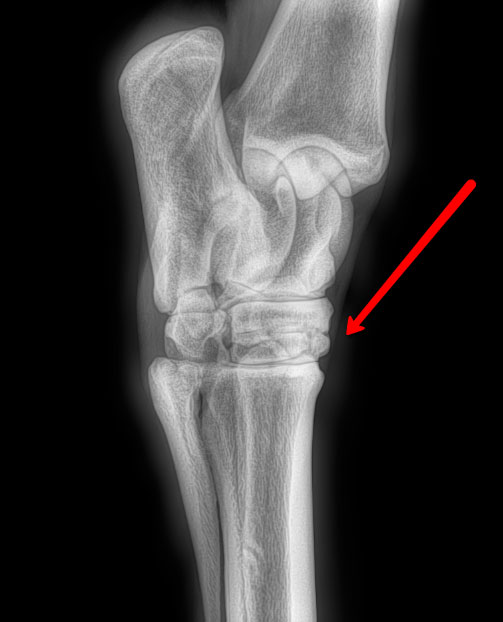Tildren – the ‘answer’ to lameness’?

On the back of our ‘Ask The Vet’ series, we had a question in from John in Co. Westmeath, for our equine Veterinary expert – Nikki Walshe.
I was just wondering if you could tell me a little more about Tildren? What are its uses? How does it work? And are there many side-effects? My horse has recently been diagnosed with bone spavin and my vet has recommended Tildren treatment.
Dear John,
Thanks for your question.
Tildren is the brand name of disodium tiludronate which is a bi-phosphonate that has activity on bone metabolism. Tildren decreases the breakdown of bone, increases bone density and also has anti-inflammatory effects.
To understand its effects, it’s helpful to first run through the normal process of bone formation. In a normal horse, bone is constantly remodelling to adjust for growth, to accommodate the loading of exercise and to become stronger and denser. This natural process becomes pathological when abnormal physiological loads are applied such as excessive exercise or poor conformation, or as a result of damage to the bone itself such as trauma.

Two different types of cells are responsible for this remodelling – Osteoblasts which are the builders of new bone and osteoclasts which break down old bone. When these cells work in harmony, it leads to the creation of strong, healthy bones able to withstand the forces associated with exercise. However, osteoblasts work at a slower rate to osteoclasts and as a result, if there is excessive loading or not enough time is given for rejuvenation of bone, the natural remodelling process leads to increased bone absorption. The end result is degenerative osteoarthritis.
Tildren works by inhibiting osteoclasts and thus allowing osteoblasts to rebuild porous bone. It also works as an anti-inflammatory by inhibiting the production of inflammatory mediators. Through these mechanisms the drug decreases pain, reduces the ill-effects of the propagating inflammatory cycle and increases bone strength.
Tildren uses:
- navicular syndrome – chronic intermittent forelimb lameness associated with bone degradation of the navicular (a small bone that lies behind the pedal bone and under the 2nd phalanx) and chronic inflammation of the associated structures.
- Osteoarthritis – Osteoarthritis is a disease of the joints, with multifactorial causes that results in inflammation of the joint leading progressive degradation and destruction of articular cartilage. It is one of the most common causes of lameness and poor performance in horses.
- tarsometatarsal and distal intertarsal joint disease – bone spavin
- coffin joint arthritis.
- thoracolumbar arthritis
Subchondral bone cyst – an area of bone lysis under the cartilage. It is usually associated with a defect in cartilage development or as a result of direct trauma to the cartilage.
How is it administered?
Tildren can be given intravenous through a jugular cannula within a litre of saline over a 30-45 minute period. The horse is usually sedated. It can also be used as regional perfusion. This involves placing a tourniquet above the area that the drug is to be used on. For example above the fetlock if coffin joint osteoarthritis is being treated. The drug is then infused locally through a regional vein (vein closest to the site). The tourniquet remains on for 25-30mins to ensure local distribution of the drug and prevent migration of the drug systemically.
Regional perfusion is often used in the case of a one joint treatment whilst intravenous use is indicated if multiple joints are affected.
Side-effects
Tildren can cause transient mild spasmodic colic and it can cause heart arrthymias if given too quickly because it causes low calcium levels. This can be avoided by administering pain relief prior to treatment and giving the treatment over an extended period of time. Finally, Tildren can interfere with young horses natural bone remodelling processes so we would not recommend its use in horses under 4 years old as they are still creating new bone for growth.
Does it work?
There have been several studies on the efficacy of Tildren and I have outlined the results of some of those below. In 2010 a study was carried out on 108 horses suffering from bone spavin 1. In combination with a controlled exercise program it was shown that the horses treated with Tildren were significantly less lame then those treated with the placebo (substance that has no therapeutic effect). In 2007 a study of 29 horses suffering from back pain associated with OA of the thoracolumbar spine was carried out 2. It showed an improvement in flexibility of the spine at 60 days in the treated group versus the placebo group. A study on the effectiveness of Tildren in the treatment of Navicular syndrome was carried out in 2003 3. At a higher dose (which is the recommend dose used today) horses showed an improvement in lameness and were able to return to their normal level of exercise within 6 months. As with all drugs further research is needed but some of the results are certainly encouraging.
A short case study
The X-rays below are of a case I saw late last year. A horse came into Greenmount Equine Hospital, presenting lame on the left fore in a straight line in trot, with the lameness increasing after sustained flexion of the lowerlimb. The lameness improved when the fetlock joint was blocked with local anaesthetic. On X-ray examination, a bone cyst in the sesamoid bone was evident. (Sesamoid bones sit at the back of the fetlock joint between the suspensory ligament and smaller ligaments which make up the suspensory apparatus). The horse was treated with regional perfusion of that limb. On re-examination a month later there was visible improvement in lameness and as you can see on the X-ray that the cyst is less defined and starting to fill in.
Tildren, when used appropriately and with the right case selection, can certainly aid and shorten the recovery period for some causes of lameness. However, as with all lameness issues there is never a simple solution or one answer. Every case is different and most problems are multifactorial. It is certainly something to keep in mind when dealing with osteoarthritis and other bone associated disease but it is quite expensive and results are not guaranteed, so be sure to manage expectations. The most important factors in lameness resolution is getting the correct diagnosis and giving the horse time.
Nikki
- M. R. GOUGH, D. THIBAUD and R. K. W. SMITH “Tiludronate infusion in the treatment of bone spavin:
A double blind placebo-controlled trial” Equine vet. J. (2010) 42 (5) 381-387
- Virginie Coudry, DVM; Dominique Thibaud, DVM; Barbara Riccio, DVM; Fabrice Audigié, DVM, PhD;
David Didierlaurent, MSc; Jean-Marie Denoix, DVM, PhD “Efficacy of tiludronate in the treatment of horses with signs of pain associated with osteoarthritic lesions of the thoracolumbar vertebral column” American Journal Veterinary Research, (2007) 68 (3) 329
- J. M. DENOIX, D. THIBAUD and B. RICCIO “Tiludronate as a new therapeutic agent in the treatment of navicular disease: a double-blind placebo-controlled clinical trial”Equine vet. J. (2003) 35 (4) 407-413
Please note that our veterinary articles are written to give you insights and understanding of common equine veterinary problems and are not intended to take the place of a veterinary examination by your own vet. If in doubt, always call your own vet should your horse require attention.
Nikki Walshe MVB is a resident vet at Greenmount Equine Hospital, Limerick
Share this article with fellow horse lovers by using the share buttons below.

